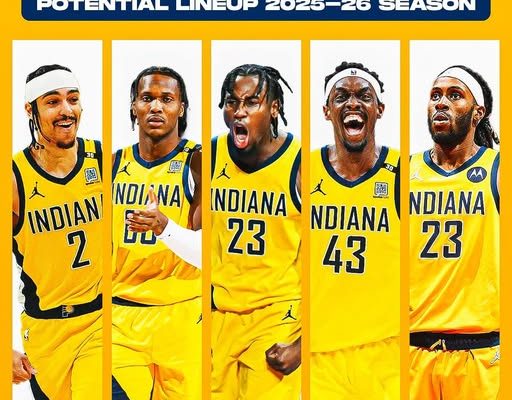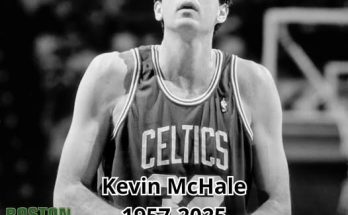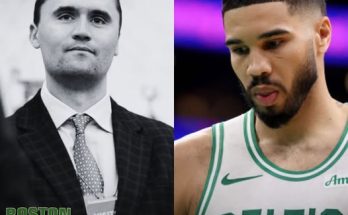The 2025–26 NBA season will be a telling one for the Indiana Pacers, who enter the campaign with a unique combination of optimism and concern. Their surprise run to the 2025 NBA Finals won the admiration of basketball fans across the league, transforming them from scrappy underdogs into a young team capable of making serious postseason noise. Yet as the new season begins, the Pacers are faced with the difficult task of replacing the engine that drove their offensive identity—All-Star guard Tyrese Haliburton. After suffering a devastating Achilles injury during Team USA training camp, Haliburton is expected to miss the entire season, creating an enormous void not just in the box score but in leadership, rhythm, and playmaking. Still, head coach Rick Carlisle is no stranger to adversity, and the Pacers’ core pieces remain talented and eager to build on the momentum of last year’s success.
With Haliburton sidelined, the onus of offensive orchestration will fall to third-year guard Andrew Nembhard, whose poise and maturity belie his age. Nembhard showed flashes of brilliance in the 2025 postseason, stepping up in big moments and showing he can handle lead guard duties under pressure. The former Gonzaga standout is a cerebral player with excellent defensive instincts, crafty footwork, and an unselfish mentality that meshes well with Indiana’s motion-heavy offensive schemes. He may not replicate Haliburton’s elite passing wizardry or shooting gravity, but he brings his own blend of efficiency and balance that could anchor the team in unexpected ways.
Meanwhile, Pascal Siakam, now a seasoned playoff veteran with a championship pedigree, steps into the clear role of locker room leader and nightly tone-setter. Siakam’s 2025 arrival via midseason trade was instrumental in Indiana’s surge toward the Finals, and his two-way excellence will now be central to the team’s identity. Capable of initiating offense, pushing in transition, and defending multiple positions, Siakam provides a sense of stability and experience that young teams often lack. His voice will matter more this season, especially in late-game scenarios when Haliburton’s steady hand is no longer available. Siakam, who averaged 22.8 points, 6.7 rebounds, and 4.9 assists per game last season, now shoulders the expectation of leading a playoff-caliber roster through the brutal Eastern Conference schedule.
Bennedict Mathurin’s role will likely expand in Haliburton’s absence. The electric second-year shooting guard burst onto the scene with highlight-reel dunks, fearless drives, and an innate flair for scoring in traffic. He plays with a swagger and urgency that gives Indiana a jolt whenever he’s on the floor, and his development into a more refined offensive weapon could dictate how far the Pacers go this year. While his decision-making and shot selection still need refining, Mathurin’s ability to create instant offense could help Indiana avoid scoring droughts during cold stretches.
On the wing, Aaron Nesmith has emerged as a crucial cog in Carlisle’s system. Once viewed as a simple 3-and-D specialist, Nesmith has quietly expanded his game, showing flashes of self-creation and consistent defensive hustle. His perimeter shooting remains a weapon, and he’s capable of guarding opposing wings and switching onto ball-handlers when necessary. Nesmith’s value isn’t flashy, but his presence often makes lineups function better, particularly alongside heavy-usage scorers like Siakam and Mathurin. The team will need his floor spacing to open up driving lanes, especially with Haliburton not there to stretch defenses with deep pull-ups.
In the frontcourt, Isaiah Jackson is penciled in as the starting center after a strong showing last season as a rim-running, shot-blocking, high-motor big man. Jackson’s athleticism gives the Pacers a vertical lob threat in pick-and-roll situations, and his timing as a shot-blocker makes him a defensive anchor, particularly in small-ball lineups. His chemistry with Nembhard and Siakam in high-low sets and transition should be something to watch, especially early in the season. With more playing time and trust from the coaching staff, Jackson may take the leap into becoming a reliable starting center in the league.
The Pacers’ bench unit is a fascinating blend of youth, athleticism, and savvy experience. Veteran guard T.J. McConnell remains a heartbeat of the second unit, bringing his trademark hustle, defensive toughness, and leadership. Even as his minutes may decline with the emergence of younger guards, McConnell’s influence on and off the court remains invaluable. He has an uncanny ability to turn momentum with a single possession—be it a steal, a sneaky layup, or a diving save.
Ben Sheppard, a young combo guard with an exciting offensive ceiling, could carve out more minutes this year. His three-point shooting and defensive activity provide a modern backcourt profile, and his ability to play both on and off the ball makes him a versatile piece for Carlisle’s rotation. Alongside him, rookie Johnny Furphy will get his first taste of NBA action, and while expectations should be tempered, his athleticism and length offer intriguing long-term upside. Furphy’s development could be one of the low-key storylines of the year, especially if he finds a niche as a floor-spacer and transition threat.
Indiana’s frontcourt depth will also be tested. Jarace Walker, the second-year big with a defensive mindset and a growing offensive skillset, could see increased minutes. Walker’s ability to guard multiple positions and operate as a short-roll playmaker allows Carlisle to deploy creative lineups. He has a physicality that belies his age and could become one of the league’s more intriguing utility bigs. Pairing him with Jay Huff—an agile stretch big who can protect the rim and hit threes—creates spacing options off the bench and enables Indiana to mirror some of the modern frontcourt archetypes used by contenders.
Obi Toppin returns as a high-flying forward who brings excitement and pace. Toppin’s offensive game has grown gradually, and his ability to knock down open shots has made him more than just a dunk contest favorite. When slotted against second units, Toppin thrives, particularly when the Pacers run and push tempo. With Haliburton out, there’s a chance for him to get more touches and show he can be a consistent threat, not just an energy spark.
Rounding out the depth chart is Tony Bradley, a physical big who may not light up the stat sheet but offers value as a traditional post defender and rebounding presence. In games that turn gritty or physical, Bradley’s bulk and experience could be leaned upon, especially in matchups against bruising centers.
As a collective, the Pacers remain one of the league’s most interesting teams—an embodiment of modern roster building with young pieces, positionless versatility, and a coach willing to adapt on the fly. They’ve embraced player development without sacrificing competitiveness, and that balance will be tested this season more than ever. Losing Haliburton is a gut punch, but it’s also a clarifying moment for this franchise. Can they grow without their star? Can they cultivate resilience through adversity? Can other players—like Nembhard, Mathurin, and Siakam—take their games to another level?
The Eastern Conference landscape offers both peril and opportunity. With teams like the Celtics, Bucks, and Heat still looming large, the Pacers will have to fight for seeding and respect every night. But there’s a hunger in this group, a desire to prove last year wasn’t a fluke. Their run to the Finals wasn’t just about Haliburton’s brilliance—it was about collective buy-in, defensive intensity, and timely execution. Those traits remain in the DNA of this team.
The front office, led by Kevin Pritchard, has done well to balance development and depth. While a blockbuster move seems unlikely mid-season unless the right opportunity arises, Indiana could make minor roster tweaks depending on how things unfold. If Nembhard ascends into a near-All-Star level guard, and if Mathurin takes the leap into becoming a 20-point-per-game scorer, Indiana may not just survive Haliburton’s absence—they may quietly retool into a more well-rounded squad.
There are, of course, looming questions. How will the offense flow in clutch minutes without Haliburton’s composure and floor spacing? Can Nembhard and Siakam co-create in late-game scenarios when the defense tightens? Will the team’s youthful depth hold up under the grind of an 82-game season? How will the rookie pieces blend in with the established rotation?
But for every question, there’s a reason to believe. This team believes in each other. They’ve been battle-tested. They’ve seen how far they can go when they lock in together. If the Pacers can maintain defensive discipline, move the ball offensively, and stay relatively healthy, they’re not just a team treading water until Haliburton returns—they’re a dark horse waiting to catch fire again. The 2025–26 Indiana Pacers may be missing their brightest star, but their identity remains unshaken: hungry, unselfish, and fearless.



